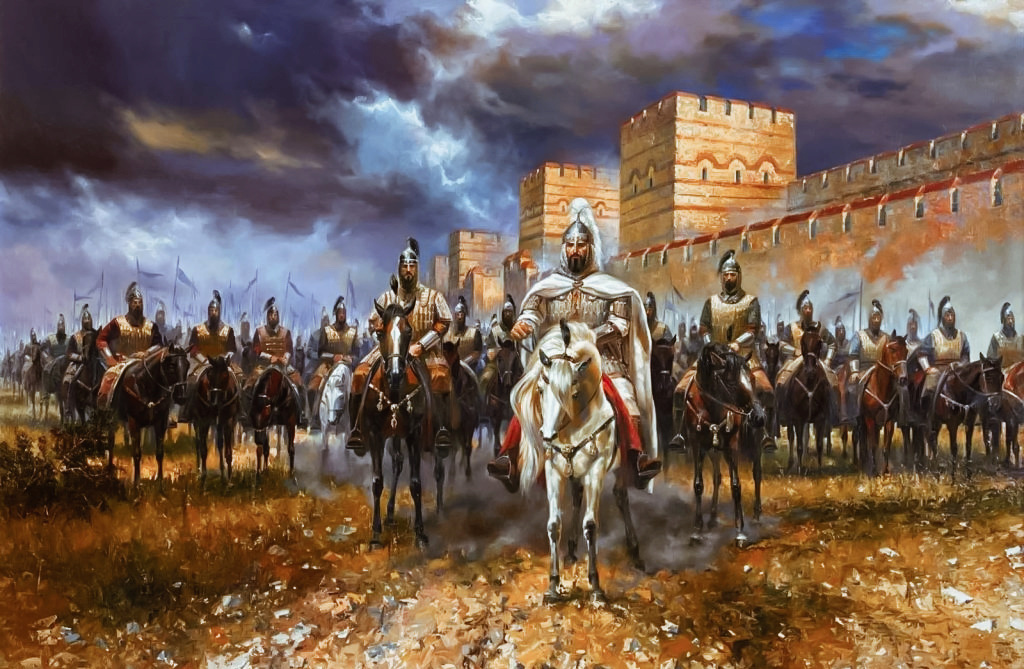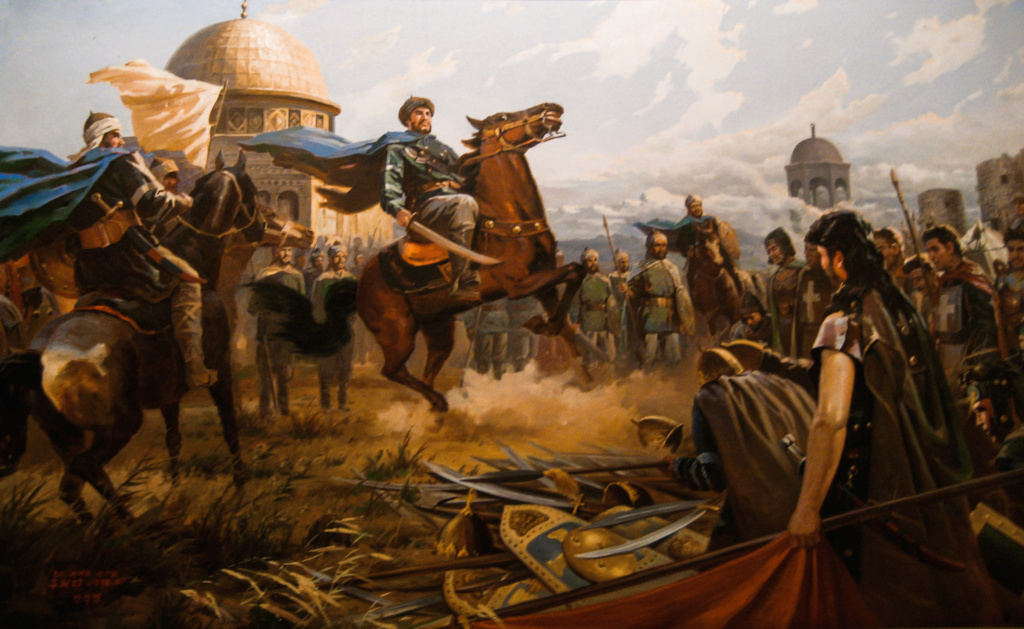The Arab “invasions” in the narratives of the defeated: “The invasion of Iran”

Among the countries “subjected to the barbaric Arab invasion,” Iran was unique, in that it contained a national religion, so to speak… a religion whose institutions intertwine with state institutions, to the extent that Zoroastrian priests sometimes supervised tax collection, and senior clerics performed the duties of the king’s advisors. .
We must first point out that, unlike the cases of Syria and Egypt, the Iranian historical sources, written in particular, that precede and follow the “Arab conquest” of Iran are scarce…
This situation extended for more than two centuries, and the modern Iranian historian Abd al-Hussein Zarenkoub called it “two centuries of silence.”
This “Persian silence” did not end except with the beginning of writing down the accumulated literature in the popular oral memory, which reached its climax with Ferdowsi and his epic “The Shahnameh”, which gave a clear picture of the viewpoint of large segments of Iranians towards the Arabs, and what Iran has come to under the shadow of Islam.
By the way, “Persians” and “Magis” as two terms pervading ancient literature, are not accurate in defining the identity of the peoples who lived and are still on the Iranian plateau and the areas surrounding it, so we will call them Iranians.
The sign of this is that Persia is a region located in the southwest of Iran, and its inhabitants played pivotal roles in the history and culture of ancient and modern Iran. Although they dominated the rest of the Iranian provinces, they are not all Iranians.
As for the Magi, which is meant by the believers in the Zoroastrian religion, it means specifically a certain class of priests, and it is not correct when dealing with the Iranians as peoples belonging to one cultural environment.
The first meeting in the "invasions" between the two sides; That is, the Iranians and the Arabs, it was in the battle of the bridge... and it ended with the defeat of the Arabs.
Then it was that they achieved three major victories in al-Qadisiyah, Nahawand, and Jalawla, which broke the back of the Sasanian Empire, which was suffering the consequences of its successive defeats against the Byzantines in the form of conflicts within the ruling house.
The Arabs clashed with the Iranian army in the Battle of Nahawand (near the present-day city of Hamadan) in the spring or summer of 642 AD... This was dictated, in fact, by the need to prevent the Iranians from launching a counterattack, and also to obtain more tribute and money.
In that battle, the Iranians mobilized their armies to fight it from all parts of the country, and the defeat in it led to the end of the organized Iranian resistance, to be replaced by clashes of less importance along with a number of treaties with local rulers.
While a Zoroastrian source says that the Arabs “burned and plundered the homes of the simple and the property of the masters” during their advance, many accounts do not speak of widespread destruction inflicted by the “Arab conquest.”

A contemporary Iranian researcher explains that most of the sites that were destroyed were military centers that were attacked by the Arabs to seize them, while the residential communities that included the families of Iranian employees were located on the outskirts of these centers.
In the context of their search for the causes of defeat, the sources of the vanquished usually give the victors the qualities of supernatural strength and extreme strength, similar to what Arab historians did hundreds of years later during the Mongol invasion.
Historian Michael Al-Syriani, for example, records his amazement at the Arab invaders' ability to cross the Tigris on their horses without losing a single soldier, and then storming Al-Madaen with relative ease.
Among the "conquered" countries, Iran was unique, in that it contained a national religion, so to speak... a religion whose institutions intertwine with state institutions, to the extent that Zoroastrian priests sometimes supervised tax collection, and senior clerics performed the duties of the king's advisors.
What happened after the “Arab invasion” is that the public scene has become very different, at a time when the Zoroastrian clergy class entered a long period of decline and disintegration of influence, in favor of the ascendant Muslim political and religious leaders.
By the way, it should be noted here that the Zoroastrian religion did not fall immediately after the “invasion”; The conflicts between Zoroastrians and Muslims (Arabs and Iranians) extended for centuries after the fall of the Sasanian state.
This is supported by the fact that many Iranians clung to their religion for centuries after the “invasions”. Moreover, the Zoroastrian institutions retained footholds in social and economic life, which prevented them from quickly disappearing, despite their loss of the authoritarian base.
But the contemporary Iranian historian, Jamshid Choksi, records that the fiercest fighting took place when Zoroastrians resisted attempts to convert them to Islam at the hands of other Iranians... The violence was less when the Arab Muslim authorities tried to do so.
In other words, the Zoroastrians were submitting to the orders of these authorities without sufficient conviction. However, if efforts were made locally (from among their own people) to get them to convert to the new religion, they would resort to violent objections.
With reservations about the voluntary tendency in interpreting history, there are important observations regarding the transfer of the cultural heritage from the Zoroastrians to the Muslims, especially with the increasing cases and reasons for daily friction and coexistence, in a kind of acculturation dictated by the necessities of dialogue and the receding of the state of armed hostility, and at the same time searching for Common cultural elements and common interests.
Choksi believes, for example, that Muslims living in the Iranian milieu used the similarity between the stories of the mother of the Prophet Muhammad and the mother of Zoroaster, who “radiated light from their wombs during their pregnancy,” to say that the Arab prophet inherited the status of the Persian prophet among the Iranians.
However, this does not mean that the biography of the Prophet is derived from the biography of Zoroaster, but only to understand the need that dictated to Muslims in the early stages of their presence in Iran, to search for common points with the prevailing culture.
… After that, it seemed that the Iranians were more accepting of Islam than the Syrians and Egyptians.
In fact, the Iranian acceptance of Islam took the form of insisting on the advancement of the “Persians” over the Arabs in faith, whether through the adoption of prophetic hadiths confirming the depth of the Iranians’ faith in Islam, or through the most complex phenomenon of populism … and that is another story for which we have previously devoted a special file.

What is certain, as Choksi explains, is that the collapse of the Sasanian state and the advancement of a succession of Islamic states was a catastrophe only for those who remained faithful to the Zoroastrian religion and were unable to adapt to the changed society.
Source: websites

